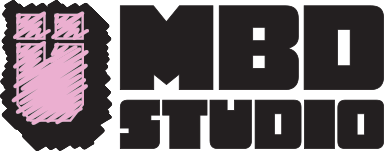The Importance of Email Marketing for Small Businesses
In the digital age, where social media platforms and search engines dominate online marketing strategies, email marketing remains a crucial and often underutilized tool for small businesses. As a web developer and email marketing expert with two decades of experience, I've witnessed firsthand the transformative impact that a well-executed email marketing strategy can have on a business's bottom line. Tools such as MailChimp, HubSpot, and Klaviyo have revolutionized the way small businesses can connect with their audience, offering sophisticated yet user-friendly platforms to launch, manage, and optimize email campaigns.
One of the most significant advantages of email marketing is the ownership of your contact list. Unlike followers on social media platforms, your email list is an asset that your business has complete control over. This direct line of communication is invaluable, allowing you to engage with your audience without the intermediary of social media algorithms. With platforms like MailChimp, HubSpot, and Klaviyo, you can segment your audience, personalize your messages, and track the performance of your emails, ensuring that your marketing efforts are as effective as possible.
While social media is a powerful tool for brand visibility and engagement, its reach is often limited by algorithm changes and the sheer volume of content competing for attention. Email marketing, by contrast, allows you to reach your audience directly in their inboxes. This direct approach ensures that your message is seen by the people who matter most to your business. Moreover, email marketing tools provide detailed analytics, enabling you to understand which messages resonate with your audience and refine your strategy accordingly.
A common concern among small business owners is the rate of unsubscribes from their email list. However, it's essential to recognize that having people unsubscribe can be beneficial. An unsubscribe is simply a self-selection process, where individuals who are not interested in your offerings remove themselves from your list. This process ensures that your marketing efforts are focused on an engaged and interested audience, improving your overall return on investment. Tools like MailChimp, HubSpot, and Klaviyo offer features to manage and minimize unsubscribes, while also providing insights into why people may choose to leave your list, allowing for continuous improvement of your email campaigns.
When selecting an email marketing tool, consider your business's specific needs. MailChimp is renowned for its user-friendly interface and robust analytics, making it an excellent choice for businesses just starting with email marketing. HubSpot offers a more comprehensive suite of marketing tools, including email marketing, CRM, and sales tools, ideal for businesses looking to integrate their marketing efforts across multiple channels. Klaviyo, with its advanced segmentation and personalization features, is perfect for e-commerce businesses looking to tailor their messaging and increase sales through targeted campaigns.
For small business owners, the benefits of email marketing are clear. By owning your contact list, improving your reach beyond social media, and focusing on an engaged audience, you can significantly enhance your marketing effectiveness. While the thought of managing an email campaign may seem daunting, tools like MailChimp, HubSpot, and Klaviyo make it accessible and manageable. Embrace the value of unsubscribes as a means to refine your audience and invest in email marketing as a cornerstone of your digital marketing strategy. With the right approach and tools, email marketing can be a game-changer for your business.
From Busy to Productive: How Small Businesses Can Work Smarter, Not Harder
The past couple of weeks have been a whirlwind. Between setting up a new office, upgrading to lightning-fast fiber internet, rebooting all my tech, and driving several key projects across the finish line, it’s been a marathon of sorts. But not the kind that leaves you gasping for air at the end. Instead, it's the kind that fills you with a mix of exhaustion and exhilaration—the good kind, where you look back and see how far you've come in such a short time. This stretch, marked by significant progress and the start of promising new partnerships, wasn’t just about ticking boxes off a checklist. It was a powerful reminder of the impact of dedicated work, the importance of setting the stage for the future, and a harbinger of hope for 2024. Let me share why this experience holds valuable lessons for small business owners everywhere.
First off, it’s crucial to say that non-stop work isn’t something I’d usually advocate for. The idea that ‘hustling’ round the clock is the only path to success is not only unsustainable but can be downright harmful. However, there are times in the life of a small business owner when the stars align—projects culminate, opportunities knock, and your presence is in high demand. These moments require a short-term sprint that, while challenging, can also be incredibly rewarding.
For me, these past weeks have underscored the essence of purposeful hard work. Moving to a new office space wasn’t just a logistical challenge; it was a step towards creating an environment that mirrors our ambitions and values. Upgrading our internet wasn’t just a technical task; it was about removing barriers to our team’s productivity and creativity. Closing projects and welcoming new clients weren’t just wins; they were affirmations of our commitment to delivering excellence.
This experience, intense as it was, distilled a few key lessons that I believe are crucial for every small business owner:
- Strategic Planning is Key: Every sprint must have a clear purpose and end goal. Whether it's launching a new service, scaling up operations, or entering a new market, having a strategic plan helps channel your efforts effectively.
- Flexibility and Adaptability: The ability to pivot and adapt to new challenges is invaluable. This might mean upgrading your tech to stay competitive, or reshaping your services to meet evolving customer needs.
- The Power of Delegation: No one can do it all alone. Delegating tasks not only helps manage your workload but also empowers your team to take ownership and grow.
- Building and Nurturing Relationships: The connections made with clients, partners, and even competitors are invaluable. These relationships can open doors to new opportunities and collaborations.
As we look towards 2024, filled with hope and determination, it’s essential to remember that success isn’t just about working hard; it’s about working smart. This means making strategic decisions that optimize your time and resources, focusing on what truly moves the needle for your business, and always keeping an eye on the well-being of yourself and your team. The past few weeks have been a testament to what can be achieved with focus, dedication, and a bit of elbow grease. But more importantly, they’ve set the stage for a smarter approach to work and growth in 2024. For small business owners, the journey ahead is about finding that sweet spot between ambition and well-being, strategy and flexibility, hard work and smart decisions.
As we gear up for the new year, let’s take these lessons to heart. Let’s strive to build businesses that aren’t just successful, but are also resilient, adaptable, and grounded in a commitment to making a positive impact. Here’s to a 2024 where we achieve our goals by working smarter, embracing change, and never losing sight of what truly matters.
If you've read this far. Here is the real highlight (of my life). My lil' Lucy visiting. Look at the smile on her face!

Navigating the New Reality: Sora's Impact on Visual Content
In the ever-evolving landscape of artificial intelligence, OpenAI's latest innovation, Sora, stands out as a groundbreaking tool with the potential to redefine the creative and business horizons for small business owners. This blog post delves into the essence of Sora, its exemplary capabilities, and the dual-edged impact it harbors for the future of digital content creation and authenticity.
Sora is not just an AI tool; it's a visionary leap into the future of video content creation. It empowers users to generate realistic and dynamic videos up to one minute in length from simple text instructions. Imagine scripting a scenario or describing a scene in words, and Sora brings it to life with astonishing accuracy and creativity. The examples released by OpenAI showcase Sora's versatility – from urban landscapes to historical reimaginings, highlighting its potential as a game-changer in digital storytelling.
 The applications for small businesses and content creators are boundless. Sora can revolutionize marketing strategies by allowing the creation of unique, compelling video content without the high costs traditionally associated with video production. From product demonstrations to storytelling ads that captivate and engage, Sora offers a new realm of possibilities for enhancing brand visibility and emotional connection with audiences.
The applications for small businesses and content creators are boundless. Sora can revolutionize marketing strategies by allowing the creation of unique, compelling video content without the high costs traditionally associated with video production. From product demonstrations to storytelling ads that captivate and engage, Sora offers a new realm of possibilities for enhancing brand visibility and emotional connection with audiences.
However, the power of Sora comes with its set of challenges, particularly in the realm of misinformation. The ease of creating realistic video content can blur the lines between reality and fabrication, making it increasingly difficult to distinguish authentic content from AI-generated falsehoods. This scenario necessitates a paradigm shift in how we consume and trust digital content, urging businesses and consumers alike to develop a keen eye for verification and a critical approach to media literacy.
OpenAI's Sora represents a significant milestone in AI development, offering unprecedented opportunities for creativity and innovation in the digital space. It heralds a future filled with potential, provided we approach it with a balance of excitement and ethical consideration. As we step into this new era, the ability to adapt, learn, and critically evaluate will be key in leveraging the benefits of Sora while safeguarding against its risks.
Now go watch all the examples on OpenAI's website.
The Power of Flexibility: Choosing the Right Web Development Tools for Your Small Business
In today's digital landscape, having a robust online presence is more crucial than ever for small businesses. Whether you're crafting your first website or looking to revamp an existing one, the array of web development platforms can be overwhelming. As a full-stack developer with a product-agnostic approach, I've navigated the intricacies of various platforms, from WordPress to Squarespace, Wix to Weebly, Shopify, straight HTML & CSS, Carrd, and even the JAMstack utilizing Netlify and GitHub. This diverse experience has reinforced a fundamental truth: flexibility and a deep understanding of how different platforms work are key to selecting the right tool for each unique client. Let's explore why being platform-agnostic is beneficial for small businesses stepping into the web development world.
Being "platform-agnostic" means not being tied to any single web development tool or technology. It's about understanding the strengths and weaknesses of each platform and choosing the one that best aligns with the specific needs, goals, and resources of your business. This approach ensures that the solution is tailored to your project, rather than trying to force your project to fit within the limitations of a chosen technology.
Every small business is unique, with distinct goals for its online presence. Some may require an e-commerce platform that simplifies the buying process, like Shopify, while others might benefit from the design flexibility of Wix or Squarespace. For those with very specific needs or a desire for full control over their site's design and functionality, diving into the world of HTML & CSS or leveraging the JAMstack might be the answer. By working with a developer who is flexible and knowledgeable about various platforms, you can ensure that your website aligns perfectly with your business objectives.
Imagine trying to hammer a nail using the handle of a screwdriver. It's not that it can't be done, but it's certainly not the most efficient method. The same principle applies to web development. Each platform has its "sweet spot" – specific types of projects where it shines the most. For example:
- WordPress is a powerhouse for those who want a balance of ease of use and customization, perfect for content-rich sites.
- Squarespace and Wix offer stunning templates and user-friendly interfaces, ideal for businesses prioritizing design and simplicity.
- Shopify stands out for e-commerce, offering a comprehensive set of tools to sell online.
- Carrd is excellent for single-page sites, making it a go-to for portfolios or event pages.
- The JAMstack, utilizing technologies like Netlify and GitHub, offers speed and security for tech-savvy businesses looking for cutting-edge web solutions.
A developer's willingness to adapt and choose the most suitable platform for each project ensures that your website not only meets your current needs but is also scalable and sustainable in the long run. This adaptability can save time, reduce costs, and avoid the need for costly overhauls as your business evolves.
For small businesses venturing into the digital space or looking to upgrade their online presence, partnering with a flexible, platform-agnostic developer is a smart strategy. It ensures that your web development project is approached with an open mind, focused on finding the best solution for your specific needs. Remember, in the vast toolbox of web development, the aim is not to pick the tool that everyone else is using, but the one that will build your dream website with the least friction and the greatest potential for growth.
Embracing this philosophy means that no matter where your business journey takes you, your online presence will be built on a foundation that's tailor-made to support your success.
Unlocking Your Web Creativity: Helping You Find The Best WYSIWYG Editors To Use In 2024
In the ever-evolving landscape of web development and e-commerce, selecting the right WYSIWYG editor for your project is crucial. Whether you're launching an online store, building a portfolio, or setting up a blog, the platform you choose can significantly impact your site's functionality, aesthetics, and user experience. In 2024, the leading contenders—WordPress + WooCommerce, Squarespace, Shopify, and Wix—each offer unique advantages and potential drawbacks. Let's dive into what makes each platform stand out and how to determine which is the best fit for your specific needs.
WordPress + WooCommerce
When it comes to creating a website that truly stands out, WordPress, coupled with WooCommerce for e-commerce functionalities, presents a compelling option for many. This powerful duo is celebrated for its flexibility, scalability, and the support provided by a vast community of users and developers. Let's delve deeper into what makes WordPress + WooCommerce a preferred choice for many, alongside some considerations to keep in mind.
Advantages
- Flexibility: WordPress is renowned for its unparalleled customization options, offering thousands of themes and plugins. This allows users to tailor their sites to exact specifications, whether for aesthetics, functionality, or both. From simple blogs to complex e-commerce platforms, the possibilities are virtually limitless.
- Scalability: For businesses poised for growth, WordPress + WooCommerce is an ideal match. Capable of supporting everything from a fledgling blog to a bustling online store, it ensures that your website can grow in tandem with your business, without the need for a platform change.
- Community Support: One of WordPress's greatest assets is its extensive community of users and developers. This network provides a wealth of resources, from forums and tutorials to plugins and themes, ensuring that help is readily available for those who seek it.
Disadvantages
- Complexity: The very feature that makes WordPress + WooCommerce so attractive—its flexibility—can also pose challenges. The sheer volume of customization options available can be overwhelming, particularly for beginners. Navigating through themes, plugins, and settings requires a learning curve that may deter some users.
- Maintenance: Unlike some hosted platforms that handle technical maintenance for you, WordPress requires regular updates and maintenance. This includes updating themes, plugins, and the WordPress core itself to ensure the site remains secure and functions smoothly. For those not technically inclined, this can necessitate additional resources or external help.
Ideal for
WordPress + WooCommerce is best suited for users who require a highly customizable site and possess either the technical know-how or the resources to manage the complexities of the platform. It's a powerful tool for businesses planning to scale up and for those who value having complete control over their website's design and functionality.
Squarespace
Squarespace stands out as a premier platform for individuals and businesses seeking a blend of ease of use and design excellence in their website building experience. Renowned for its intuitive design interface and all-in-one package, Squarespace simplifies the web development process while delivering aesthetically pleasing results. Let’s explore the advantages and disadvantages of choosing Squarespace for your website needs.
Advantages
- Ease of Use: Squarespace is celebrated for its user-friendly design interface, which allows even those with no prior web development experience to create stunning websites. This intuitive approach ensures that beginners can navigate the platform with ease, focusing on design and content without the complexities of coding.
- All-in-One Platform: Offering a seamless experience, Squarespace includes hosting, domain registration, and access to a range of beautifully designed templates within its package. This consolidation simplifies the website creation process, making it an attractive option for those who prefer a streamlined approach to web development.
- Design-Focused: With a keen eye on aesthetics, Squarespace provides a collection of professionally designed templates that are both responsive and customizable. This focus on design ensures that websites not only look professional but also work flawlessly across all devices, catering to the needs of modern internet users.
Disadvantages
- Limited Scalability: While Squarespace is an excellent choice for small to medium-sized websites, it may not be the best fit for those looking to expand significantly. The platform's structure is more suited to straightforward sites, and while it can accommodate growth to an extent, it may lack the scalability required for larger enterprises.
- Less Flexibility: In comparison to platforms like WordPress, Squarespace offers fewer options for plugins and third-party integrations. This limitation means that while Squarespace sites can be rich in design, they might lack specific functionalities that can be achieved through the extensive plugins and tools available on other platforms.
Ideal for
Squarespace is ideally suited for creative professionals and small business owners in search of a straightforward, design-centric website builder. Its ease of use, combined with the quality of its design templates, makes it a perfect choice for those looking to quickly establish a professional online presence without delving into the complexities of web development.
Shopify
In the realm of e-commerce, Shopify has emerged as a powerhouse, specifically engineered to meet the needs of online stores. This platform is renowned for its comprehensive suite of tools designed to simplify the complexities of online selling, from inventory management to secure transactions. Below, we'll explore the reasons why Shopify stands out as a preferred choice for e-commerce ventures, alongside some considerations to bear in mind.
Advantages
- E-commerce Specialization: Shopify's core strength lies in its specialization in e-commerce. The platform is equipped with powerful tools that streamline the management of inventory, payments, and shipping, making it an all-encompassing solution for online retailers. This focus ensures that businesses have everything they need to operate smoothly and efficiently.
- Built-in Tools: One of the significant benefits of using Shopify is the availability of a wide range of e-commerce features right out of the box. This includes everything from product management to payment processing, effectively reducing the need for additional plugins or external software. This integration of essential tools simplifies the setup and management of online stores, allowing owners to focus more on their business and less on technical configurations.
- Reliability: Shopify takes the worry out of website hosting and security. The platform ensures that online stores are not only fast but also secure, providing customers with a safe shopping experience. This reliability is crucial for building trust with consumers and is a key reason many businesses choose Shopify for their e-commerce needs.
Disadvantages
- Cost: While Shopify offers a robust platform for e-commerce, the associated costs can accumulate. Monthly fees for the platform itself are just the beginning; the use of paid apps and premium themes can further increase the overall expense. For businesses on a tight budget, these costs require careful consideration.
- Customization Limits: Despite its flexibility, Shopify does have its limitations when it comes to customization. While it offers a range of themes and the ability to tweak the design, there are constraints compared to a fully custom-built solution. This can be a consideration for businesses with very specific branding or functionality requirements that go beyond the platform's offerings.
Ideal for
Shopify is ideally suited for businesses that are exclusively focused on e-commerce and prioritize ease of use and reliability. Its comprehensive set of built-in tools, combined with the platform's reliability, makes it a top choice for entrepreneurs who want to launch and grow their online stores without getting bogged down by technical details.
Wix
Wix has carved out a significant niche in the website builder market, celebrated for its user-friendly design capabilities and comprehensive suite of features. It's a platform that demystifies the web development process, making it accessible to a wide audience, from small business owners to individual creators. Let's explore the advantages and disadvantages of choosing Wix for your web development needs.
Advantages
- Drag-and-Drop Interface: Wix's hallmark feature is its intuitive drag-and-drop interface, which simplifies the website design process. This feature empowers users to craft their sites visually, without the need for coding expertise. Whether you're aiming to launch a portfolio, blog, or business site, Wix makes it possible to bring your vision to life with ease and precision.
- Wide Range of Features: Beyond ease of use, Wix boasts a diverse array of templates and apps that enhance site functionality. From online booking systems to e-commerce solutions, the platform provides a wealth of options to customize and extend your site's capabilities. This versatility allows users to tailor their websites to meet specific needs, all within the Wix ecosystem.
- Marketing Tools: Another significant advantage of Wix is the inclusion of built-in SEO and marketing tools. These resources are designed to help users improve their site's visibility and attract more visitors. From SEO wizards to social media integration, Wix offers a range of tools to support your marketing efforts, making it easier to promote your site effectively.
Disadvantages
- Less Control Over SEO: Despite its built-in marketing tools, Wix traditionally offers less control over SEO settings compared to more customizable platforms like WordPress. While Wix has made strides in improving its SEO capabilities, users looking for advanced optimization features might find the platform's offerings somewhat limiting.
- Template Restrictions: Wix's template-based design approach comes with a caveat: once you select a template and start building your site, switching to a new template later on can be cumbersome. Essentially, adopting a new template requires you to rebuild your site from scratch, which can be a significant drawback for users who wish to refresh their site's design without starting over.
Ideal for
Wix is an excellent choice for small businesses and individuals who value ease of use and visual design over the complexities of advanced customization and SEO control. Its user-friendly interface, combined with a robust set of features, makes it a compelling option for those looking to create a professional-looking website with minimal technical hassle.
Beyond the Tools: The Value of Expert Guidance
While each of these platforms offers a viable path to creating a professional online presence, it's crucial to remember that they are just tools in the broader context of web development and design. The success of your site depends not only on the platform you choose but on how well it aligns with your goals, audience, and brand strategy.
This is where the value of consulting with a web development professional becomes apparent. An expert can provide insights into which platform best suits your project's needs, considering factors like scalability, functionality, and long-term maintenance. Moreover, they can help customize your site in ways that go beyond the out-of-the-box capabilities of these platforms, ensuring your online presence is as unique and effective as possible.
In conclusion, while it's tempting to stick with what you know, being open to expert recommendations can lead to more tailored, innovative solutions that truly meet your needs. Whether you're leaning towards the flexibility of WordPress, the simplicity of Squarespace, the e-commerce prowess of Shopify, or the user-friendly design of Wix, remember that your choice of platform is just the beginning of crafting a successful online presence.
Embracing the Office Once Again: A Journey Back to Structure, Routine, and Separation
The solitude and freedom of working from home have their perks, but they also come with challenges, particularly to mental health. The blend of isolation and the endless overlap of work and personal time have nudged me towards seeking a change. An external office promises a refreshing shift—offering a space where professional challenges stay, allowing my home to reclaim its role as a haven for relaxation and personal pursuits.
The self-employed lifestyle demands a high level of self-discipline, and while I've managed to navigate this, I've found myself missing the inherent structure that an external workspace offers. The simple rituals of preparing for work, commuting, and transitioning to a dedicated work environment help to mentally signal the start and end of the workday. This structure is not just about productivity; it's about crafting a day that allocates space for focused work and genuine downtime.
The allure of an external office lies not just in the physical space it provides, but in the psychological boundary it reinstates between work and home life. This separation is vital for me as a self-employed individual, ensuring that my living space is no longer a constant reminder of ongoing projects or unanswered emails. It's about creating an environment where work can thrive in its own right, without encroaching on the sanctity of personal space and time.
On a lighter note, there's one aspect of moving back into an office that I can't help but joke about: the internet upgrade. Transitioning from the whims of satellite internet to the blazing speeds of fibre-optic is like swapping a bicycle for a sports car. I'm half-convinced that this alone will skyrocket my productivity (or at least significantly cut down on those coffee breaks spent waiting for files to upload). So, here's to faster internet and the countless other benefits that this move promises!
This journey back to an external office is a testament to the evolving needs of the self-employed lifestyle. It's a move inspired by the pursuit of a healthier work-life balance, a more structured daily routine, and, let's not forget, significantly better internet speeds. As I make this transition, I'm reminded that the essence of self-employment is the ability to adapt—to shift gears in pursuit of what best serves our work and personal well-being. So, here's to new beginnings, may they be as swift and reliable as my soon-to-be internet connection.
In Praise of Matching Tracksuits: My Ode to Comfort and Style
After years tethered to a wardrobe dictated by boardrooms and business meetings, I've discovered an unexpected source of joy and liberation: the matching tracksuit. This might seem like a small, perhaps even trivial change in the grand scheme of things, but for me, it's been a profound shift. Here's why I've fallen in love with the humble tracksuit and why it might just be the unsung hero of personal comfort and style.
There's something to be said for the sheer comfort of slipping into a tracksuit. It's like a hug for your whole body, a signal that it's time to relax, recharge, or simply be at ease with yourself. After years of conforming to the stiff, formal attire expected in the corporate world, rediscovering comfort has been nothing short of revolutionary. It's not just about physical ease; it's about mental space, too. Wearing something so unpretentiously comfortable helps clear my mind, allowing me to focus on what truly matters—be it a passion project, a leisurely walk in the forest, or quality time spent with loved ones.
Matching tracksuits have a unique aesthetic that balances simplicity with a hint of playfulness. They come in an array of colors and designs, from the understated to the bold, allowing me to express my personality without saying a word. This sartorial choice has become my signature, a way of standing out and staying true to myself in a world that often values conformity over individuality.
There's an undeniable simplicity to the tracksuit lifestyle. It eliminates the daily dilemma of what to wear, freeing up time and mental energy for more important decisions. This simplicity has permeated other aspects of my life, encouraging me to seek joy in the little things and to appreciate the beauty of the moment. Whether I'm working on a new project, exploring the great outdoors, or simply enjoying a quiet evening at home, the tracksuit has become a symbol of a life lived with intention and ease.
Embracing the tracksuit has been, in a way, a form of rebellion—a break from the expectations of what a professional "should" look like. It's taught me the value of comfort over appearance, of personal satisfaction over societal approval. This shift has been incredibly liberating, opening up new avenues for creativity and self-expression that I never knew existed.
If there's one thing I hope to share through my tracksuit journey, it's the permission to prioritize comfort and to find joy in the simple act of being yourself. Whether you're a fellow tracksuit enthusiast or someone contemplating a break from the norm, I encourage you to explore what comfort means to you. In the end, it's not just about what you wear, but how it makes you feel—confident, relaxed, and unapologetically you.
The matching tracksuit, with its blend of comfort, simplicity, and style, has become more than just my go-to attire; it's a reflection of a broader shift towards a more relaxed, authentic way of living. It's a reminder that sometimes, the smallest changes can have the most profound impacts on our lives. So here's to the tracksuits and the unexpected joy they bring—may we all find our own version of comfort and embrace it wholeheartedly.
Life Beyond Sales Targets: Finding Balance and Joy in Nature's Pace
In the relentless pursuit of quotas and the constant buzz of the corporate world, time felt like a commodity—always scarce and measured in the outcomes of sales and negotiations. My life in sales Xerox, Konica Minolta & Salesforce was a thrilling race against time, where every second counted towards the next big deal, the next milestone. Yet, amidst this exhilarating chase, the essence of time's true value began to blur. It took a global pause—a pandemic that reshaped our world in 2020—and a bold decision to relocate to the forests of Nova Scotia for me to truly rediscover and redefine my relationship with time.
The decision to leave behind the corporate ladder and rebuild my life in a setting as tranquil as Nova Scotia's forests marked the beginning of an extraordinary transformation. This wasn't just a change of scenery; it was a profound shift in perspective. The corporate world, with its sales targets and strategic meetings, was replaced by the natural rhythms of the forest, where time tells a different story—one of growth, renewal, and the silent wisdom of the ages.
In this new chapter, success is no longer measured by the number of deals closed or the sales targets achieved, but by the quality of moments and the depth of experiences. The forest has taught me to see time not as a resource to be spent, but as a gift to be cherished. Each sunrise over the trees, each season's change, serves as a reminder that the most valuable moments are those that connect us with something greater than ourselves—whether it's the natural world, our loved ones, or the pursuit of our true passions.
To my fellow entrepreneurs, who know all too well the pressures of deadlines and the lure of perpetual busyness, I offer this reflection: there is profound strength in pausing, in stepping back from the constant pursuit of success to appreciate the journey itself. The transition from the fast-paced corporate world to a life attuned with nature's pace has revealed that true success lies in our ability to savor each moment, to find balance, and to redefine our ambitions in a way that aligns with our deepest values.
This journey has not been a departure from the skills and lessons learned in sales; rather, it's been an application of those lessons in a broader context. The ability to connect, to persuade, and to forge meaningful relationships—skills honed in the sales arena—have been invaluable in navigating this transition and in building a fulfilling life that prioritizes well-being, community, and personal growth.
As we navigate our own paths, let us take to heart the lesson that time's swift passage is not something to be feared or fought against, but embraced with intention and gratitude. Let us find inspiration in change, courage in the pursuit of new beginnings, and joy in the simple, quiet moments that life offers. Whether you're in the heart of the city or the solitude of the forest, remember that every day presents an opportunity to redefine success, to live fully, and to make each moment count.
Getting the Most Out of ChatGPT for Your Content: Best Practices for Crafting a Targeted Message
In the ever-evolving landscape of digital marketing and content creation, leveraging artificial intelligence tools like ChatGPT has become a game-changer. As a powerful language model developed by OpenAI, ChatGPT offers an extraordinary opportunity for businesses and content creators to streamline their content creation process, ensuring that their message resonates effectively with their ideal client. Here, we delve into best practices to help you maximize the potential of ChatGPT in crafting a refined, targeted message.
1. Understanding Your Audience
Before you begin, it's crucial to have a deep understanding of your target audience. Who are they? What are their pain points, interests, and preferences? ChatGPT can assist in analyzing data and generating content, but the effectiveness of the message hinges on how well you understand your audience.
Leverage ChatGPT to create detailed audience personas. Provide the model with demographic data, interests, and behavioral patterns to generate comprehensive profiles of your ideal clients.

2. Clear and Specific Prompts
The precision of ChatGPT's output is directly related to the clarity of your input. When you provide clear, specific prompts, you guide the AI to generate content that aligns closely with your goals.
Instead of saying, "Write a blog post about digital marketing," try "Write a blog post for small business owners explaining three cost-effective digital marketing strategies in simple terms."
3. Collaboration Between Human Creativity and AI Efficiency
While ChatGPT is a robust tool for content generation, it doesn't replace human creativity and insight. Use it as a collaborator to enhance your ideas.
Begin with a rough draft or an outline of your content. Use ChatGPT to expand, refine, or edit the draft, ensuring that your personal touch and expertise remain evident.
4. Iterative Refinement
Don't expect perfection in the first draft. Use ChatGPT iteratively. Refine your prompts based on the outputs you receive, gradually honing in on the message that best resonates with your audience.
After generating content, review it critically and provide feedback to the model. For instance, if the tone isn't quite right, adjust your prompt to specify the desired tone and ask ChatGPT to revise the content.
5. Keeping Content Fresh and Up-to-Date
The digital world moves fast, and so should your content. ChatGPT can help you keep your content fresh and relevant.
Regularly ask ChatGPT to update key pieces of content, especially those that include data, statistics, or trends that change over time.
6. SEO Optimization
In the digital space, visibility is key. ChatGPT can assist in optimizing your content for search engines, but it's important to guide it with the right SEO practices.
Provide ChatGPT with a list of targeted keywords to include in your content. Ensure that these keywords align with your audience's search habits.
7. Multiformat Adaptability
Your content should be adaptable across different formats - blog posts, social media updates, newsletters, etc. ChatGPT can help repurpose content for various platforms.
Give ChatGPT specific instructions about the format you're targeting. For example, "Convert this blog post into a concise script for a social media video."
8. Consistency in Brand Voice
Maintaining a consistent brand voice across all your content solidifies your brand identity. ChatGPT can adhere to specified style guides, ensuring consistency.
Provide ChatGPT with a style guide that includes your brand's tone, language preferences, and any dos and don'ts. Use this guide in all your prompts.
Conclusion
Incorporating ChatGPT into your content creation process offers numerous advantages, from efficiency to consistency. By understanding your audience, crafting clear prompts, and combining AI capabilities with human creativity, you can create content that not only reaches but resonates with your ideal client. Remember, the most effective use of ChatGPT lies in a collaborative approach, where human insight and AI efficiency work in tandem to produce compelling, relevant, and impactful content.









